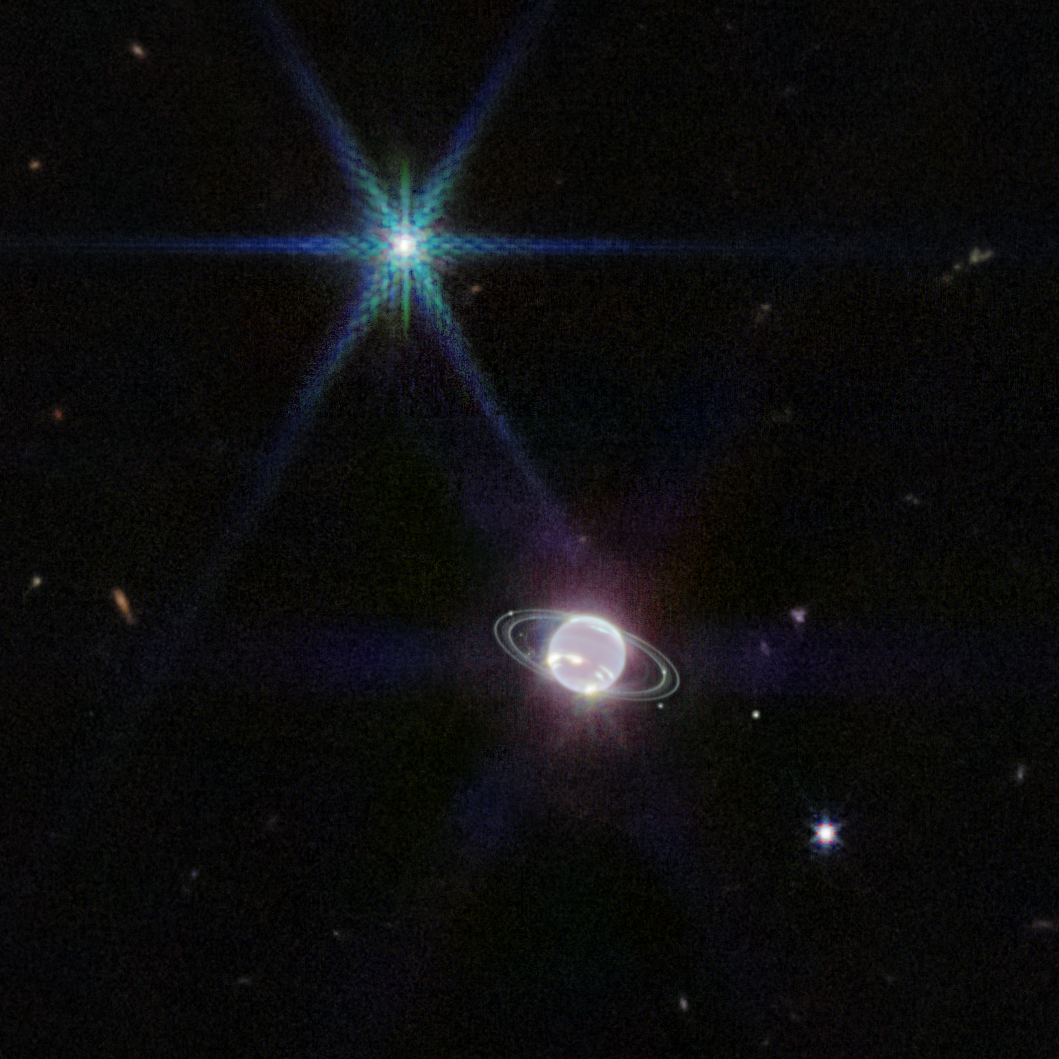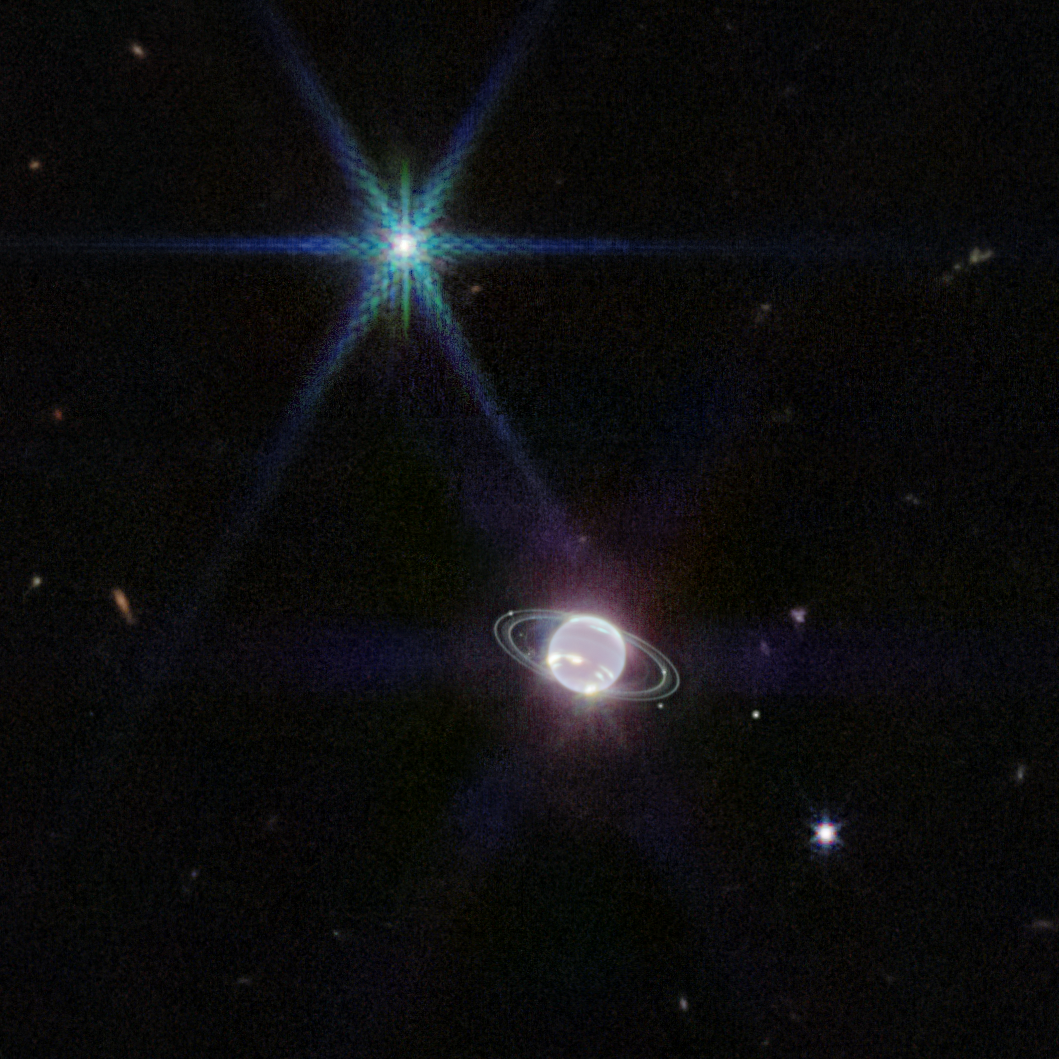Webb Captures Clear View of Neptune’s Rings

NASA’s James Webb Space Telescope is showing off its capabilities closer to home with its first image of Neptune. Not only has Webb captured the clearest view of this peculiar planet’s rings in more than 30 years, but its cameras are also revealing the ice giant in a whole new light. Neptune, located 30 times farther from the sun than Earth, orbits in one of the dimmest areas of our solar system. High noon on Neptune would appear as a dim twilight does to us. This planet, characterized as an ice giant due to a hydrogen and helium-rich interior, has fascinated and perplexed researchers since its discovery via mathematics, not eyesight, in 1846. Most striking about Webb’s new image is the crisp view of the planet’s dynamic rings—some of which haven’t been seen at all, let alone with this clarity since the Voyager 2 flyby in 1989. Visible in the outermost ring, Adam’s ring, in this Webb image are clumps of dust called ring arcs. These thicker bands of dust have been observed to split and evolve, and astronomers will use Webb to investigate why and how that process occurs. Webb’s Near-Infrared Camera (NIRCam) captures objects in the near-infrared range from 0.6 to 5 microns. In the context of Neptune and other solar system gas giants, this means, with Webb, we’re able to study deeper into the planet’s turbulent atmosphere to learn more than ever before about circulation patterns, chemical composition, and atmospheric structure. This first image of Neptune reveals several key features of the ice giant’s atmosphere only visible in the infrared. Most prominent in the image are a series of bright patches representing methane-ice clouds. These clouds are high in the atmosphere and reflect the sun’s bright light. Images from other observatories, including the Hubble Space Telescope and the W.M. Keck Observatory, have recorded these rich, moving features over the years. More subtly, a thin line of brightness circling the planet’s equator is a visual signature of the global circulation of rising and falling material that powers Neptune’s winds and storms. At the equator warmer gases descend, glowing more brightly than the surrounding cooler gases. Neptune’s 164-year orbit means its northern pole, at the top of this image, has remained just out of view for astronomers for the most part–until now. Webb picks up an area of heightened brightness at the north pole area, hinting at some sort of atmospheric structure that could be investigated in future studies. A vortex swallowing part of the southern pole is also clearer in Webb’s view, showing signs of an extremely detailed, multi-faceted structure with a clear, continuous band of clouds surrounding it. Also photobombing Webb’s portrait of Neptune is a bright point of light sporting the signature diffraction spikes in many of Webb’s images—not a star, but Neptune’s most unusual moon, Triton. Covered in a frozen sheen of condensed nitrogen, Triton reflects an average 70 percent of the sunlight that hits it. Webb also captured 6 more of Neptune’s 14 known moons as they follow a relatively close orbit around the planet. The James Webb Space Telescope is the world’s premier space science observatory. Webb will solve mysteries in our solar system, look beyond to distant worlds around other stars, and probe the mysterious structures and origins of our universe and our place in it. Webb is an international program led by NASA with its partners, ESA (European Space Agency) and the Canadian Space Agency.
NASA, ESA, CSA, STScI
September 21, 2022
| Credit | NASA, ESA, CSA, STScI |
|---|---|
| Language |
|
This image of the Neptune system, captured by Webb’s Near-Infrared Camera (NIRCam), reveals stunning views of the planet’s rings, which have not been seen with this clarity in more than three decades. Webb’s new image of Neptune also captures details of the planet’s turbulent, windy atmosphere.
To the upper left of the planet in this image, one of Neptune’s moons, Triton, also sports Webb’s distinctive eight diffraction spikes, an artifact of the telescope’s structure. Webb also captured 6 more of Neptune’s 14 known moons, along with a smattering of distant galaxies that appear as dim splotches and a nearby star.

